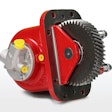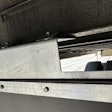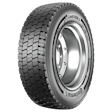Did you know that shirt you’re wearing is made of engine coolant?
Well, it’s not made with coolant, so much as both share a key ingredient.
During a technical session Tuesday at the Technology & Maintenance Council (TMC) fall meeting in Raleigh, N.C., a panel of coolant experts dropped a handful of interesting facts while addressing trucking’s recent transition from fully formulated conventional coolants to hybrid organic acid (HOAT) and organic acid technology (OAT) extended life coolants, and the maintenance required to manage the change.
Dr. Frank Cook of Old World Industries led off with the nugget about the modern wardrobe. Cook says water was used as the first coolant for engines because of its ability to transfer heat. But because water alone was an issue in the winter, methanol was added to keep the fluid moving.
Things changed again in the 1930s, when a manufacturing facility realized the ethylene glycol it was draining into a water source kept the water from freezing. The first ethylene glycol-based antifreeze coolant, Prestone, was introduced soon after.
Cook says coolant was the main use for ethylene glycol for about 20 years until it was discovered that ethylene glycol also could be used to create the clothing fiber polyester.
It is still used for both today.
But while ethylene glycol remains a key component in today’s coolants, other additives within the fluid are changing.
After decades as the dominant coolant in the heavy-duty industry, fully-formulated conventional coolants (the ones with the pink cap) have now been displaced as factory fills at all OEMs by HOAT (yellow cap) or OAT (red cap) extended life coolants. These coolants, which include organic acids with conventional inhibitors, provide improved heat transfer and component life, extended service intervals and most importantly, reduce maintenance costs.
Cook says today nearly 80 percent of all heavy-duty tractors are running extended life coolants, and moving forward he and the TMC panel says that number will likely grow.
CCI’s Fred Alverson says extended life coolants are optimal for new engines because of the metals found within the systems. As more aluminum and soft metals are integrated into engines, Alverson says the need for need for corrosion protection grows. Extended life coolants have lower ph levels, which Alverson says provide better protection than the higher ph levels found in conventional coolants.
Both engineers advise service professionals in the OE and aftermarket channels to stick with extended life coolants when they are found in newer vehicles. Conventional coolants can still provide engine protection (and at a lower price point than extended life coolants) for new model year engines but they aren’t able to do nearly as much, which requires more monitoring, top offs and ultimately, more coolant drains and downtime.
“Over the lifetime of a vehicle if you go with an extend life coolant it is the most effective way of doing things,” Cook says.
And moving from one coolant to another is not as difficult as it may seem.
Brent Hilton at Maverick Transportation says his company has transitioned a large section of its 1,600-trucks—all pre-2015 tractors—from conventional coolants to extended life OAT coolants in an attempt to standardize the coolant needs of the entire fleet.
Hilton says Maverick installed ELC converters on each older tractor after draining the older coolant and refilling with OAT, and has installed stickers identifying each truck that has been converted to alert technicians during future maintenance intervals about the coolant change. It’s also added a quarterly over-the-road dilution test to ensure the new coolant is performing properly within the system. He says the changes have netting Maverick a total savings of nearly $400,000 per year.
Vic Meloche at Daimler Trucks North America says transitioning from NOAT to OAT is even easier. He says tractors factory filled with NOAT can simply be topped off with OAT until reaching a coolant drain interval. Then it’s one fluid out and the other in.
TA/Petro’s Homer Hogg says his company has developed a coolant training course for its national service network to inform its technicians of these maintenance changes.
Hogg says TA/Petro technicians must pass the courses before they are allowed to perform cooling system service, and he says technicians also are required to contact customers about coolant needs when encountering a truck that lacks coolant fill information.
“Some customers have very specific instructions,” Hogg says, “so we do not add anything until [the technician] knows what’s in the system.”











